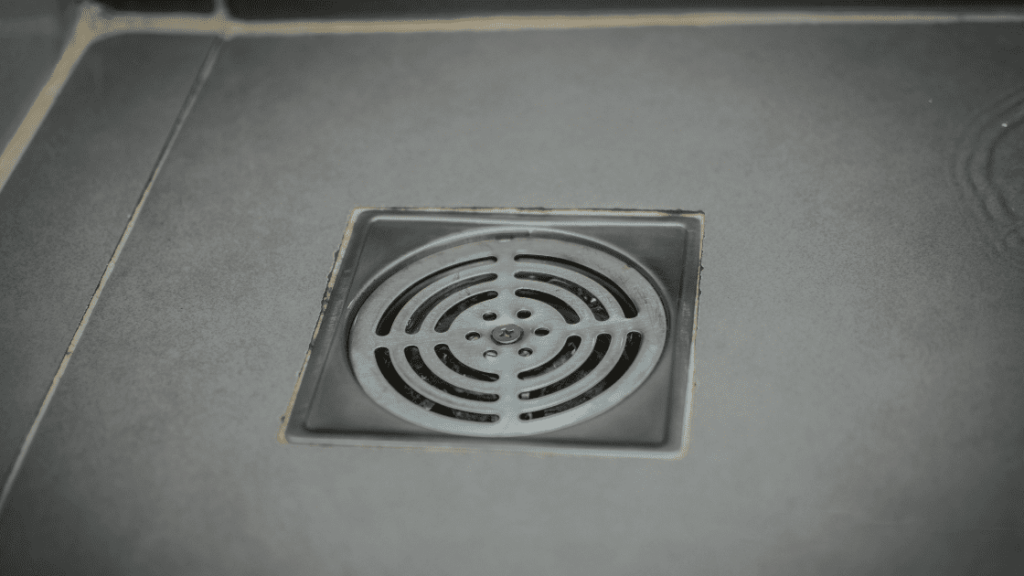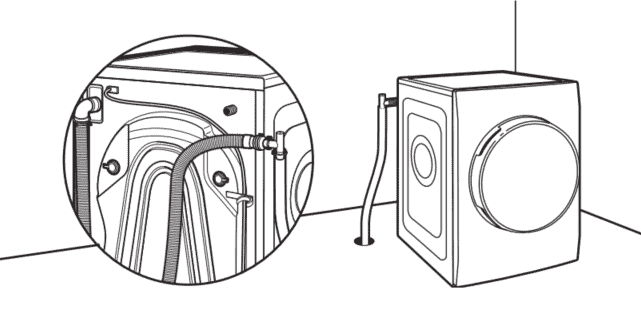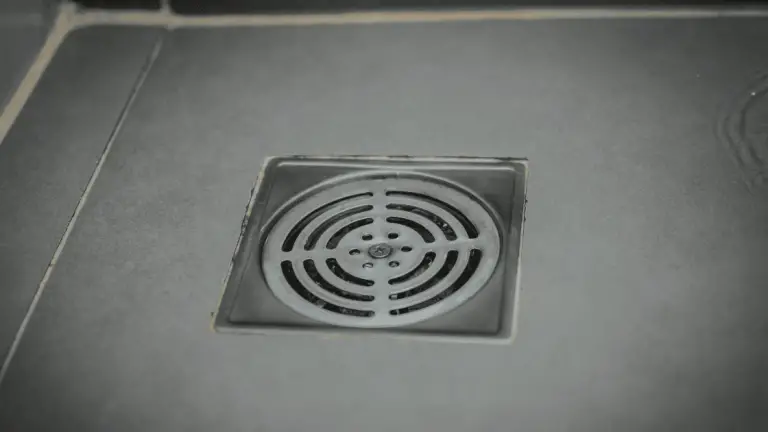One of the common concerns you would have with your washing machine after washing, rinsing, and spinning clothes is draining.
It can always be a hustle if you don’t have a proper system for draining water after you use your washing machine.
One common way to drain your washing machine that may come to your mind is into your floor drain.
But the real question arises, can a washing machine drain into a floor drain?
Yes, a washing machine can drain into a floor drain but there are advantages and disadvantages if you choose to drain your washer into a floor drain.
Consider these if you want to drain your washing machine into a floor drain:
- The capacity of your floor drain should be adequate enough to convey the amount of water from your washer.
- Your floor drain should be clear enough not to get clogged and spill over into your room.
- Your washer should be positioned close enough to your floor drain.
- Where does your floor drain discharge to; it should drain into a sewer or as appropriate by local laws
In this article, we will explain whether a washing machine can drain into a floor drain or not.
And all that you need to consider if you are thinking about draining your washing machine into a floor drain.
Table of Contents

Do washing machines need floor drains?
It may not be so clear if you should drain your washing machine into a floor drain.
But one thing is certain and highly recommended; a floor drain near your washing machine or in your laundry room.
We all experience a faulty washer every now and then.
And one common problem is a leaking washing machine.
A Leaking washing machine can cause a lot of damage to your laundry room and well as cause mold growth if not stopped.
You wouldn’t want this.
So yes, a washing machine needs a floor drain so that in the advent of a severe leak from your washer, your laundry room may not get flooded.
Even though The IRC code (2017) does not make putting a floor drain in the laundry room mandatory, it’s a requirement in some jurisdictions.
Do check your local building codes to find out the requirements for your area.
Where should a washing machine drain to?
Where you should drain your washing machine is decided by your local building regulations.
One thing is for sure, a washing should drain into a sewer line.
So even if you choose to drain your washing machine into the floor drain, you need to be sure that the floor drain connects to a sewer.
You can also simply channel your drain hose into a nearby sink for it to drain directly into the sink.
Some homeowners also choose to create a dedicated line (drain outlet) to drain their washing machine into the main sewer. Or connect to a standpipe.
This is usually considered during the construction stages but you can still get it done by a qualified plumber in your home.
You can’t drain your washing machine directly into the environment since it’s against building regulations in many areas.
There are however some cases where your washing machine can be drained out into the environment into trees or bushes;
That is when you use biodegradable detergents; in that case, water from your washing machine will not be harmful to the environment.
Read Also: Whirlpool washing machine leaking from bottom (Why and how to fix)
Can a washing machine drain hose run along the floor?
You can run a washing machine drain hose along the floor if you are running it into the closest floor drain.
Running it a long distance may not be favorable as the hose may cause a trip or may not look aesthetically pleasing.
So if you should run your washing hose along the floor, we recommend it’s run only a short distance to the nearby floor drain.
And don’t forget that your floor drain has to have enough capacity to be able to convey the water from your washer, else there could be an overflow.
According to the Uniform Plumbing Code (UPC), a washing machine should have a standard drain size of 2 inches, with a minimum size of 1½ inches.
Does a washer need a dedicated drain?
It may not be necessary if you have an existing drainage system to which you can connect your washing machine drain.
All that matters is that your washing machine can drain and finally reach its final outfall which is usually in the main sewer.
In fact, most homeowners prefer to take advantage of the existing plumbing system without having to spend more money on a new plumbing system for their washing machine.
But if you’re now building your house, you may want to have a dedicated drain for your washer to reduce the pressure from sharing plumbing lines with other fixtures.
How far can a washing machine be from the drain?
If you are going to be connecting your drain hose to a standpipe or an outlet drain, the outlet of the drain outlet should be a minimum of 30 inches high so that no water will be sucked from it.
Also, it has to be a maximum of 8 feet high or 96 inches in order to work well.
The draining capacity will decrease with increasing height, and there’s a likelihood of odors in your washer when water isn’t able to drain well.
Your washing machine manual will specify for your model so you should check there for more details regarding the minimum and maximum distances.
How to connect a washing machine to a floor drain

You can effectively connect your washing machine to a floor drain.
Each washing machine model comes with specific instruction as to how to connect to the drain.
But generally, you will need a more rigid outer drain accessory.
For a whirlpool washing machine;
You will need:
- Siphon break kit
- Connector kits (2)
- Extension drain hose.
- Raise the hose to the height of your washer and connect the siphon breaker at that height.
- You then run the outer hose from the top straight into the drain.
- Use zip ties to support the hose with a siphon breaker at the top.
You will find specifics to your washer by referring to the use and care guide.
Read also: Do washing machines always have water in them? (Answered)
Can a washing machine use the same drain as a sink?
If you are building a new house, having a dedicated drain for your washing machine in your laundry room will be a good idea.
However, for an already built house, you may wonder if it’s possible to connect your washer to a sink drain.
The answer is yes. A washing machine and a sink can share the same drain.
One of the critical things to consider is code requirements because if you don’t do the connection properly, you will run into serious issues.
Most times, you will need to change the entire rain and use a 2inch pipe instead of using the standard 1 ½-inch pipe from the sink
If not done properly, you may end up pulling contaminated water into your washing machine.
Is it illegal to drain a washing machine outside?
The legality of draining your washing machine outside depends on the local law available in your location.
In most places in America and other countries, it is illegal to drain your washer out into the environment without any form of treatment. In fact, your neighbors may even be the first to report you when they notice it.
In case you live in a city that is populated then you definitely can’t drain your washing machine outside.
However, if you live far away from a city or community you may get away with draining your washer outside.
It all depends on the local regulations in your area. So always check with your local authorities.
Conclusion
As has been explained in detail in this article, you can run your washing machine drain into a floor drain.
You however need to consider things such as the capacity of the floor drain, and the outfall of the floor drain.
You should also check your local building codes to know specific requirements.
Sources:

